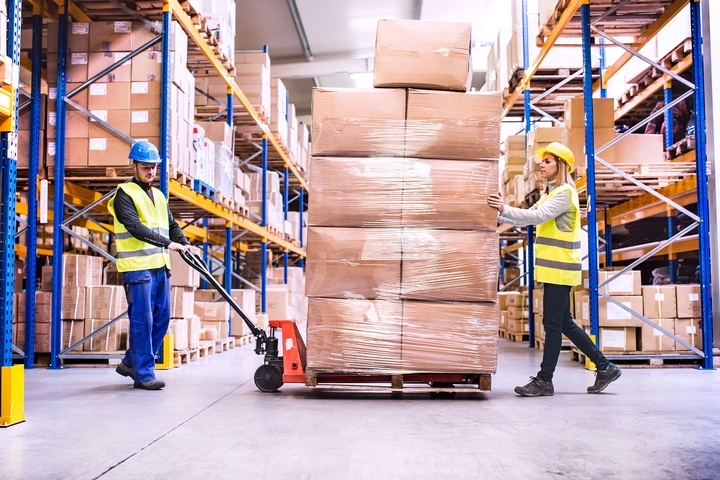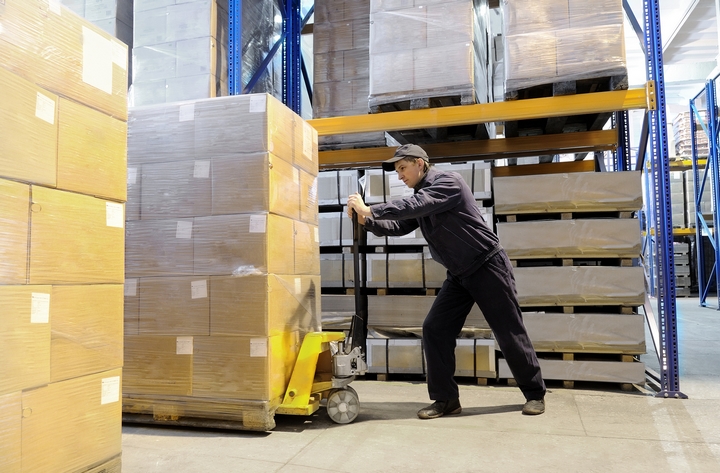Derived from the French word ‘logistique,’ logistics simply refers to the general coordination and facilitation of movement of both goods and people in the most effective and smooth manner. Logistics are needed in almost every sector. For example, in the military context, logistics are required to deliver and sustain army supplies since an army without supplies is quite vulnerable.
In the business environment, which is where logistics are broadly used, they are considered to be at the heart of the supply chain as they facilitate the movement of tangible goods from one point to another, from the manufacturers to consumers. Here are the six different types of logistic services you should consider.
1. Warehouse Services

Before you begin transporting your product to a designated point, you will probably need to store it in one or many warehouses at different points in time. You can choose between an in-house warehouse, which is run by the company itself, or hire the services of third-party logistics providers. In most cases, these types of logistics are preferred by most companies, since they handle and ship products more efficiently and at a fraction of the cost on behalf of the client.
When choosing a warehouse for your products, establish how much space you need, for how long, the ease of accessibility, or lack thereof, for your products, and security. This is important because, at the end of the day, you don’t want to end up making losses.
2. Third-Party Logistics Services

3PL services act as a bridge between the manufacturer of a product and the consumer. A 3PL company is not involved in the manufacture of the product, but in making sure it reaches the end-user in the same condition it was shipped. The logistics provider ensures that all involved parties meet their obligations; from the time goods leave a certain point until they reach the desired location.
Their duties could extend to other areas such as storage, customs relations, terminal operations, supply chain management, analysis, among other services. The advantage of 3PL services is that all shipping and transportation processes are controlled and managed by the logistics service provider.
3. Freight Shipping

These types of logistics combining vehicles such as trains, cargo ships and trucks to facilitate the transportation of goods. It is mostly used for bulk shipment. For larger loads, you can use full truckloads (FTLs), which can transport anywhere from two dozens to 26 pallets. You can use FTLs to ship oversize loads such as those in refrigerated trucks.
For small-sized loads, usually larger than a parcel but smaller than a truckload, use less than truckloads (LTLs), so you can share the shipping costs with other companies. In some instances, you may also need to use drayage services, which involve moving products from ports to warehouses for storage.
Freight shipping is complex as shipping trends keep changing by the day. You need to stay updated on the latest trends in the industry to get the most cost-effective shipping method.
4. Courier Shipping

This is what comes to mind when the term ‘shipping companies’ is mentioned. These types of logistics services are perfect for small orders, especially if it involves fragile items that require a lot of care.
Compared to freight, courier shipping saves time, is more efficient in moving products directly from the warehouse to consumers; but it can be more expensive when moving items meant for freight shipping.
5. In-house Logistics Services

In-house logistics may involve creating a department within the organization whose sole purpose is to deal with matters logistics. The advantages of in-house logistics include having more control of products’ movement and, in some cases, it is highly cost-effective.
On the downside, you are likely to be less effective than an outsourced third-party logistics service provider since you are at the same time involved in other matters such as manufacturing the product. On the other hand, if you outsource this task to a 3PL provider, you can be sure this is all they do. They, therefore, have more expertise when it comes to moving goods than you have.
6. TMS Logistics Software

Transportation is a critical part of the supply chain. There is a need for functional systems that make work easier. One such is the TMS, which stands for “transportation management system.” This platform allows users to handle planning, execution and optimization of activities in the transportation of items.
These types of logistics work by coordinating all the data points in the transportation network by collecting vital information, such as rates and route options, and then presenting the data in a simple easy-to-understand format. As more companies embrace this system (current at 35%), it has streamlined the shipping process and enhanced efficiency. Its ability to report or present key performance indicators clearly allows clients to monitor their shipments at every stage of the supply chain process.
Logistics involve activities such as information flow and integration, handling of materials, production, packaging of goods, warehousing, transportation and security, among others. As your business grows, so does the scale of your logistics services.




